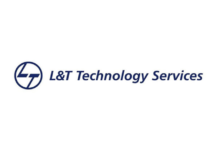
The integration of large language models (LLMs) into modern databases marks a significant leap in the evolution of data management systems. As businesses increasingly rely on vast and complex datasets to drive decision-making, the demand for more intelligent, responsive, and adaptive data management solutions has surged. Enter new-age databases with inbuilt LLMs, promising to transform how we store, query, and interact with data.
Why are they a game changer for businesses?
Databases with inbuilt Large Language Models (LLMs) are vital for businesses because they transform how data is accessed, managed, and utilized. By enabling natural language interaction, they make data more accessible to non-technical users, allowing for broader use across organizations. Here’s why they are crucial:
- Simplifies interaction with databases: LLMs allow users to interact with databases using natural language queries, making data more accessible to non-technical users. This democratizes data access, enabling broader use across the organization and fostering a data-driven culture.
- Delivers precise and contextually relevant outcomes: LLMs can interpret and correlate data from different sources, providing a more comprehensive understanding of the data landscape. They can understand context, intent, and nuances in queries, leading to more accurate and relevant results. This is particularly valuable for complex or ambiguous queries where traditional systems might struggle.
- Enables real-time insights and decision-making: Databases with embedded LLMs can analyze historical data to forecast future trends and provide real-time insights from vast datasets. By summarizing key information and identifying emerging patterns, they empower faster and more precise decision-making.
- Enhances database scalability and efficiency: LLMs are highly effective at processing and interpreting unstructured data like text or images. They can automate tasks such as data classification, tagging, and summarization, significantly reducing manual effort and enhancing overall efficiency.
- Integrates seamlessly with AI Workflows: Integrating LLMs directly into databases enables a seamless connection with broader AI workflows, allowing data to be processed, analyzed, and utilized for AI applications without the need to transfer it between systems, thereby reducing latency and complexity. Additionally, LLMs enhance the performance of other AI models by providing more refined data inputs, which improves the quality of AI-driven insights and predictions.
- Makes databases more secure and complaint-free: LLMs offer advanced threat detection by analyzing patterns in data access and usage to identify potential security risks. They also play a crucial role in maintaining compliance by monitoring and flagging sensitive information. Additionally, LLMs aid in data privacy management by identifying and safeguarding sensitive data, ensuring adherence to regulations like GDPR.
The future:
With the rapid adoption of AI across industries, there’s a significant need for databases with inbuilt LLMs that can support AI transformation and innovation. Leading industry players in databases such as IBM, Microsoft, and Oracle have started offering databases with this capability. For instance, Oracle had recently launched ‘HeatWave GenAI’, which provides integrated and automated generative AI with in-database large language models (LLMs). These advanced databases not only handle vast amounts of data but also provide real-time analysis, predictive insights, and automated decision-making directly within the database environment. By reducing the need for data transfers and enhancing the quality of AI-driven outputs, databases with embedded LLMs will become central to AI workflows, driving efficiency, scalability, and more intelligent, data-driven innovations across industries.
Do Follow: CIO News LinkedIn Account | CIO News Facebook | CIO News Youtube | CIO News Twitter
About us:
CIO News is the premier platform dedicated to delivering the latest news, updates, and insights from the CIO industry. As a trusted source in the technology and IT sector, we provide a comprehensive resource for executives and professionals seeking to stay informed and ahead of the curve. With a focus on cutting-edge developments and trends, CIO News serves as your go-to destination for staying abreast of the rapidly evolving landscape of technology and IT. Founded in June 2020, CIO News has rapidly evolved with ambitious growth plans to expand globally, targeting markets in the Middle East & Africa, ASEAN, USA, and the UK.
CIO News is a proprietary of Mercadeo Multiventures Pvt Ltd.





